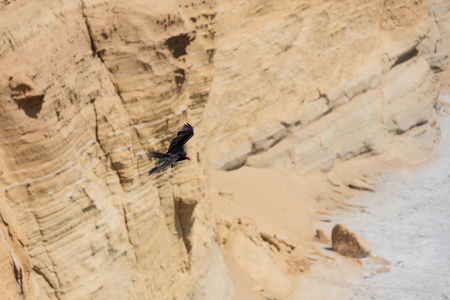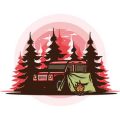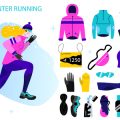Introduction to Escalante Canyons
Nestled in the heart of Southern Utah, the Escalante Canyons offer some of the most stunning and remote wilderness experiences in the American Southwest. This region, part of the Grand Staircase-Escalante National Monument, is a dream destination for backpackers looking to get off the beaten path and explore unique geological wonders. With its winding canyons, colorful rock formations, and hidden arches, Escalante feels like another world altogether.
What sets Escalante apart is its incredible variety of slot canyons and sandstone landscapes. Here, you’ll find everything from narrow passageways barely wide enough to squeeze through to vast open gulches lined with soaring cliffs. Popular routes like Coyote Gulch and Zebra Slot have earned legendary status among hikers and backpackers for their breathtaking scenery and sense of adventure.
Why Backpackers Love Escalante
| Feature | Description |
|---|---|
| Remoteness | Far from crowded parks, you’ll find solitude and peace here. |
| Geological Diversity | Sculpted arches, natural bridges, twisting slots, and red rock vistas abound. |
| Adventure Level | Routes range from beginner-friendly trails to challenging backcountry treks. |
| Wildlife & Nature | Keep an eye out for desert wildlife and spring wildflowers along the streams. |
The Allure of Slot Canyons
Slot canyons are one of Escalante’s biggest draws. These narrow passages carved by centuries of water create surreal corridors with walls that glow orange and pink in the sunlight. Coyote Gulch offers long, scenic stretches perfect for overnight backpacking, while Zebra Slot is famous for its striped rock walls and tight squeezes—a must-see for adventurous souls with a camera in hand.
Getting Ready for Your Adventure
If you’re ready to swap city noise for starry skies and sandstone cathedrals, Escalante is calling your name. In this series, we’ll guide you through everything you need to know about backpacking Coyote Gulch and exploring Zebra Slot—two of Southern Utah’s most iconic canyon experiences.
2. Preparing for the Trek: Logistics and Gear
Permits: What You Need to Know
Before you hit the trail in Coyote Gulch or Zebra Slot, you’ll need a permit. The Bureau of Land Management (BLM) manages permits for overnight backpacking in the Escalante Canyons area. You can pick up your free permit at the Escalante Interagency Visitor Center or at major trailheads. Always check current regulations since policies can change depending on the season or visitor impact.
Permit Details
| Area | Permit Needed? | Where to Get It | Cost |
|---|---|---|---|
| Coyote Gulch (Overnight) | Yes | Visitor Center/Trailhead | Free |
| Zebra Slot (Day Hike) | No | N/A | N/A |
Weather: Plan for Extremes
The weather in Southern Utah can be unpredictable. Spring and fall are prime seasons because summer temps can soar above 100°F, while winter nights drop below freezing. Thunderstorms are common from July through September, raising flash flood risks in slot canyons like Zebra Slot. Always check the forecast before your trip and never enter a slot canyon if rain is expected.
Packing for the Weather
- Spring/Fall: Layer up—mornings can be chilly, afternoons warm.
- Summer: Lightweight, sun-protective clothing; wide-brim hat; extra water.
- Winter: Insulated layers; be prepared for icy trails.
Water: Staying Hydrated in the Desert
Water sources in Coyote Gulch are seasonal and may not always be reliable. Carry a minimum of 3-4 liters per person per day. Water in the gulch usually needs to be filtered or treated. In Zebra Slot, there’s no water—plan accordingly.
| Location | Water Source? | Treatment Needed? | Notes |
|---|---|---|---|
| Coyote Gulch | Occasional streams/springs | Yes (filter/boil) | Seasonal flow; never rely solely on natural sources. |
| Zebra Slot Canyon | No | N/A | Carry all your own water in. |
Essential Gear Checklist
- Packs: Lightweight backpack with good support for scrambling.
- Shoes: Sturdy hiking shoes or boots; neoprene socks if wading is likely.
- Tent/Shelter: Lightweight tent or tarp; check for staking options as ground may be rocky or sandy.
- Navigation: GPS, printed map, compass (cell service is unreliable).
- Food: High-calorie, easy-to-pack meals; snacks for long days on foot.
- Trekking Poles: Helpful for uneven terrain and river crossings.
- Sunscreen & Hat: Shade is limited—protect yourself!
- LNT Supplies: Waste bags, trowel, reusable containers (see below).
Leave No Trace: Protecting Escalante’s Wild Beauty
The Escalante Canyons are special because they’re wild and pristine. Help keep them that way by following Leave No Trace principles:
- Plan Ahead & Prepare: Know your route, carry enough supplies, and understand local rules.
- Travel & Camp on Durable Surfaces: Stick to established trails and campsites whenever possible.
- Dispose of Waste Properly: Pack out all trash—including food scraps—and use portable toilet systems or dig catholes at least 200 feet from water sources.
- Leave What You Find: Don’t take rocks, plants, or artifacts home—photos last longer!
- Minimize Campfire Impact: Fires are discouraged; use camp stoves instead.
- Respect Wildlife: Watch from a distance and never feed animals.
- Be Considerate of Others: Keep noise down and yield to other hikers on narrow trails.

3. Hiking Coyote Gulch: Route Highlights and Must-Sees
Overview of the Classic Route
Coyote Gulch is one of southern Utah’s most legendary backpacking destinations, winding through the heart of the Escalante Canyons. The classic route offers an unforgettable adventure with towering red rock walls, natural arches, cascading waterfalls, and plenty of prime camping spots along the Escalante River. Whether you’re a first-timer or a seasoned hiker, Coyote Gulch’s scenery will blow your mind.
Route Highlights
| Highlight | Description | Mileage (approx.) |
|---|---|---|
| Hurricane Wash Trailhead | Main access point for most hikers; gradual descent into the gulch | 0 miles (start) |
| Jacob Hamblin Arch | A massive sandstone arch, perfect for photos and rest stops | 7 miles in |
| Coyote Natural Bridge | A unique bridge formed by centuries of flowing water | 9 miles in |
| Cliff Arch (“Jug Handle”) | Dramatic arch hanging from canyon wall; side hike option | 10 miles in |
| Waterfalls & Swimming Holes | Cascading falls and pools ideal for cooling off in summer heat | Varies along route |
| Escalante River Confluence | The meeting point of Coyote Gulch and Escalante River; lush scenery and wildlife spotting | 12-13 miles in (depending on route) |
Must-See Features Along the Way
Jacob Hamblin Arch
This iconic sandstone arch is often considered the crown jewel of Coyote Gulch. It’s a huge natural formation that creates a dramatic gateway as you follow the streambed deeper into the canyon. Many hikers choose to camp nearby to enjoy sunrise or sunset views.
Coyote Natural Bridge and Cliff Arch
Coyote Natural Bridge is another stunning feature, with clear water flowing beneath it—perfect for a midday break or photo op. A short detour leads to Cliff Arch (also called Jug Handle Arch), perched high on the canyon wall, offering spectacular perspectives on the sculpted rock formations.
Waterfalls and Swimming Holes
The gulch is dotted with small waterfalls and inviting swimming holes, especially refreshing during hot summer days. These spots are ideal for wading, relaxing, and soaking up the serene desert vibes.
Camping Spots Along Coyote Gulch
You’ll find plenty of flat sandy benches above the creek, shaded by cottonwood trees—prime real estate for backcountry campsites. Popular areas for camping include near Jacob Hamblin Arch and under Coyote Natural Bridge. Always follow Leave No Trace principles to keep this canyon wild for future visitors.
4. Exploring Zebra Slot: Adventure and Safety Tips
Why Zebra Slot Is a Must-See
Hidden deep in Southern Utah’s Escalante Canyons, Zebra Slot Canyon is a true bucket-list adventure for hikers and photographers alike. Its name comes from the unique pink and white striped sandstone walls that look just like a zebra’s pattern. While it’s not the longest slot canyon, its narrow, winding corridors and vibrant colors create an unforgettable experience.
Getting There: Trailhead and Essentials
| Trailhead | Distance (Round Trip) | Estimated Time |
|---|---|---|
| Hole-in-the-Rock Road (Zebra Slot Trailhead) | 5.3 miles | 3-5 hours |
The hike to Zebra Slot starts from Hole-in-the-Rock Road, about 8 miles south of Escalante. The trail is mostly flat but sandy, so sturdy hiking shoes and plenty of water are essential, especially during the warmer months.
Navigating the Tight Walls: Key Tips
- Travel Light: The slot gets extremely narrow—sometimes just 10 inches wide. Only bring what you can comfortably carry on your back.
- Check Water Levels: Zebra Slot often holds pools of water, especially after rain. Be prepared to wade or even swim through cold, murky water. Check recent trail reports before heading out.
- Time Your Visit: Early morning or late afternoon brings the best light for photos and cooler temperatures for hiking.
- Avoid Flash Floods: Never enter slot canyons if there’s rain in the forecast, even miles away. Flash floods can happen suddenly and are extremely dangerous.
- Pace Yourself: Moving through the tightest sections can be slow and physically demanding—don’t rush or force your way through tricky spots.
Packing List for Zebra Slot Canyon
| Item | Why You Need It |
|---|---|
| Waterproof Shoes/Sandals | Muddy pools and water crossings are common inside the slot. |
| Dry Bag or Ziplock Bags | Protect your phone and camera from water damage. |
| Sunscreen & Hat | No shade on the approach hike. |
| Slim Backpack/Daypack | You’ll need to squeeze through very narrow spots. |
| Map or GPS App | The trail is not always obvious in the open desert. |
Capturing the Magic: Photography Tips
- The best colors pop when sunlight filters into the slots; try mid-morning or late afternoon for that classic zebra-striped glow.
- A wide-angle lens works wonders for capturing the tight twists and towering walls of the canyon.
- If you’re using a phone camera, tap to focus on the brightest spot to avoid washed-out images.
- Please remember: Leave no trace. Don’t carve into canyon walls or leave any trash behind—help keep this natural wonder beautiful for future adventurers!
5. Local Culture, Access, and Responsible Recreation
Understanding the Escalante Community
The town of Escalante is the gateway to the canyons and slots of southern Utah. It’s a small, tight-knit community with a deep connection to the land. Many locals are ranchers, outfitters, or artists who have lived here for generations. Visitors will notice that hospitality runs strong—local diners serve hearty meals, and shop owners are quick with advice on trail conditions or weather. If you’re spending time in Escalante, consider supporting local businesses like gear shops and family-owned restaurants.
Access Points for Coyote Gulch and Zebra Slot
Getting to these iconic hikes requires a bit of planning. Most trailheads are accessed via unpaved roads that may require high-clearance vehicles, especially after rain. Here’s a quick guide:
| Trail | Main Trailhead | Road Type | Notes |
|---|---|---|---|
| Coyote Gulch | Hurricane Wash or Crack-in-the-Wall | Dirt/Gravel (High-clearance recommended) | Check road conditions at the Escalante Interagency Visitor Center |
| Zebra Slot | Hole-in-the-Rock Road Mile 8.1 | Dirt (Passable for most cars when dry) | No facilities at trailhead; bring plenty of water |
Respecting Indigenous Heritage and Public Lands
The canyons and mesas of Grand Staircase-Escalante National Monument hold centuries of history for Native American tribes, including the Hopi, Navajo, Paiute, Ute, and Zuni peoples. Please be mindful of cultural sites—do not touch petroglyphs or take artifacts, and stay on established trails to protect fragile archaeological areas.
Key Respectful Practices:
- If you see pottery shards or rock art, observe only—leave everything as you found it.
- Many springs are considered sacred; treat water sources with respect and don’t bathe or wash dishes nearby.
- Avoid making rock cairns or leaving graffiti—let nature tell its own story.
Advocating for Conservation in Canyon Country
The unique landscapes of southern Utah are under pressure from increased visitation and development threats. As visitors, we play a role in protecting these wild places:
- Follow Leave No Trace principles: pack out all trash, avoid trampling vegetation, and keep noise levels low.
- Share knowledge—encourage friends to recreate responsibly and support conservation groups working in the area.
- If you encounter local rangers or volunteers, thank them for their stewardship—they’re essential to keeping these canyons pristine.


